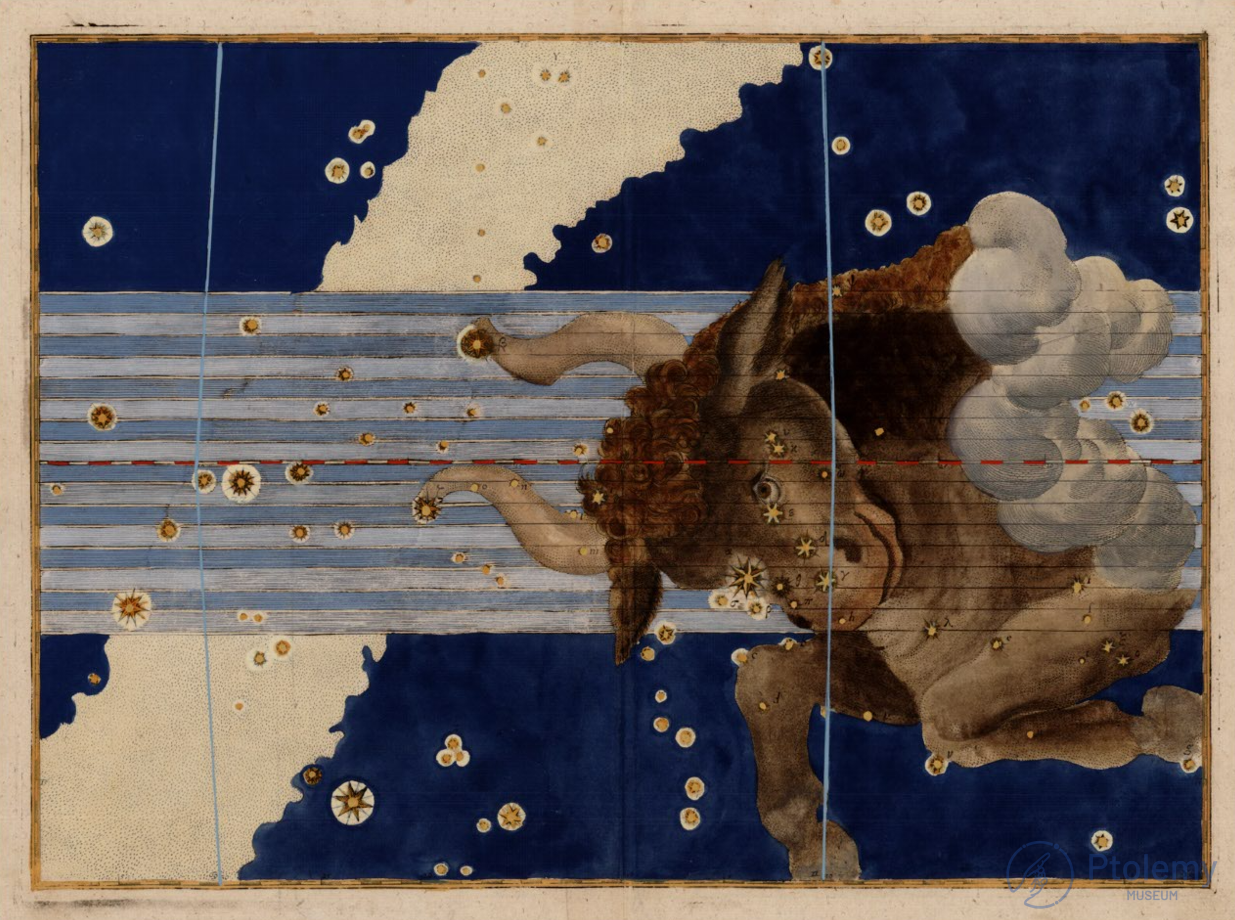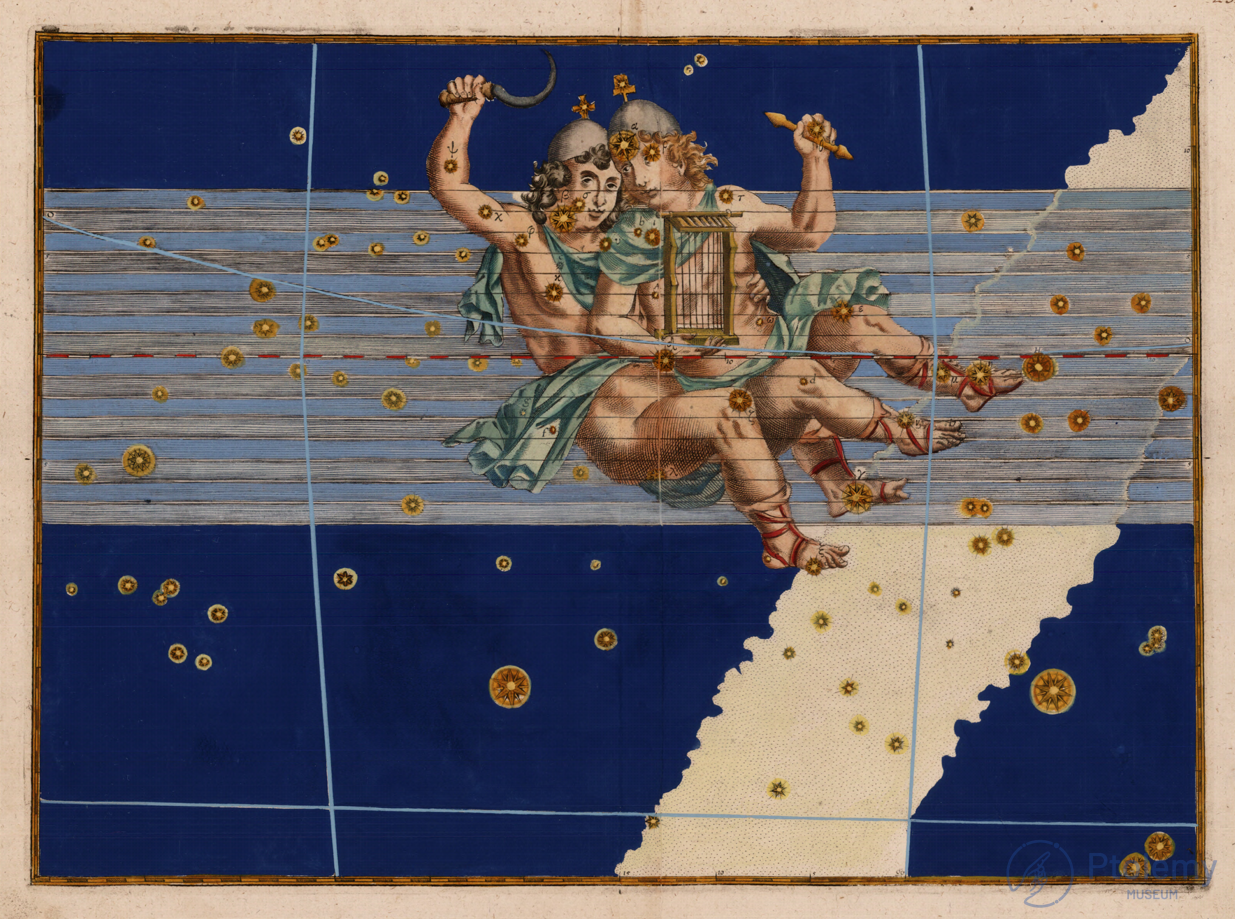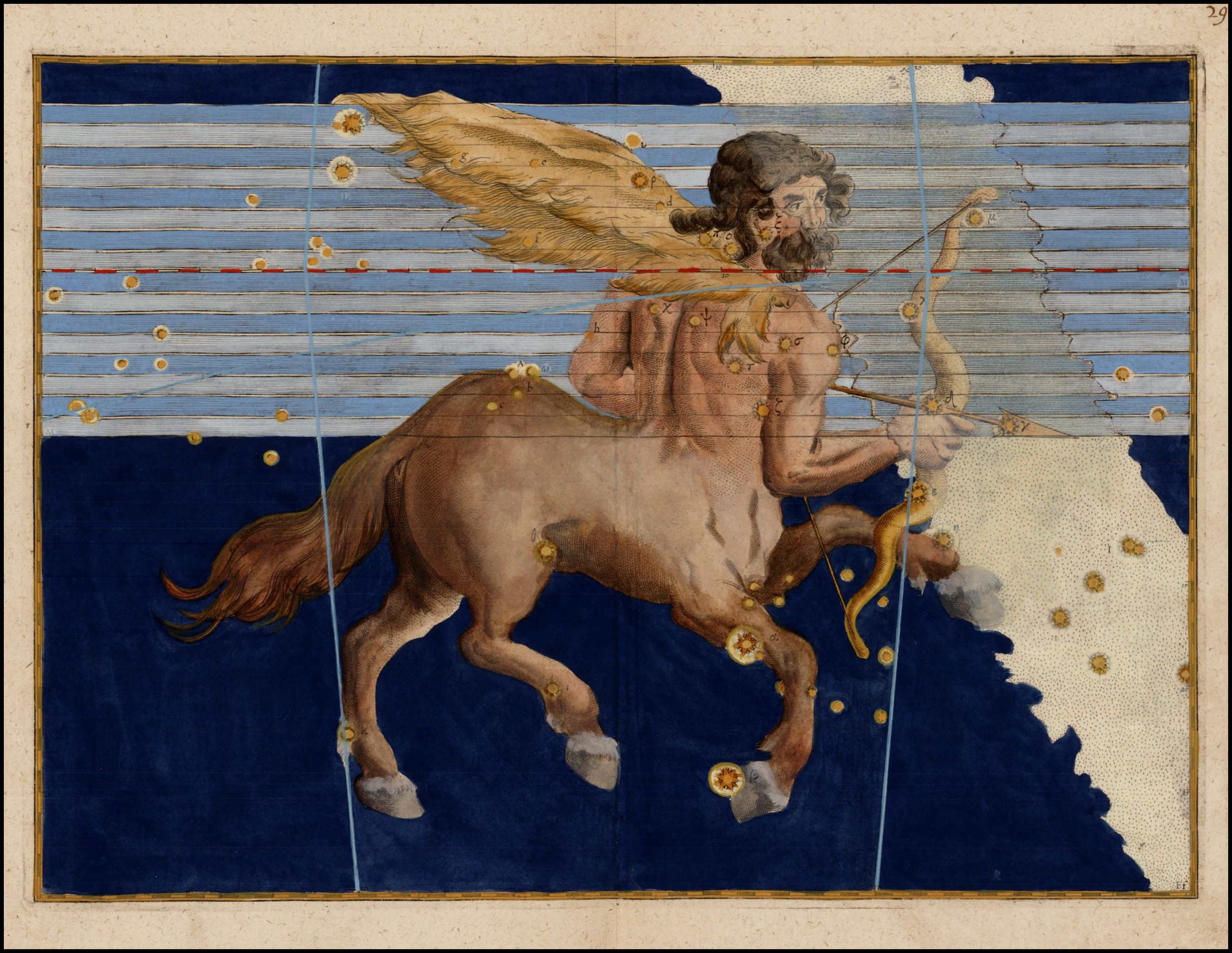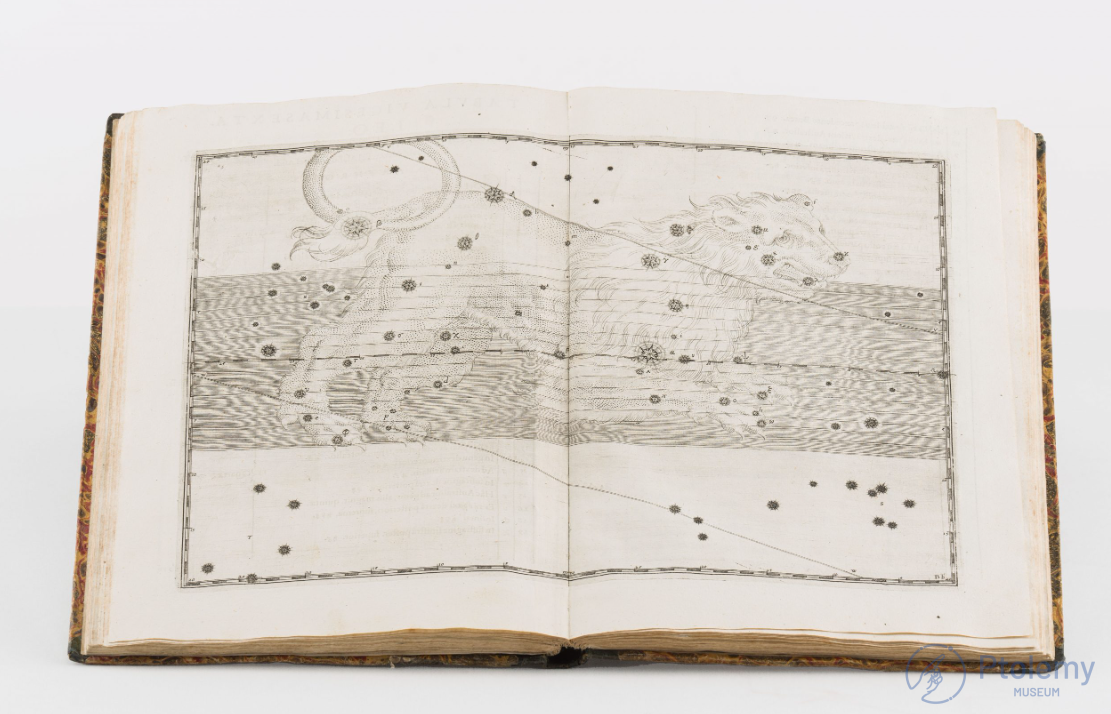Uranometria
約翰·拜耳
《拜耳星圖》
德國奧格斯堡
1603年
《拜耳星圖》全名《測天圖:以新法繪製並銅版印刷的所有星座圖集》,由律師出身的業餘天文學家約翰·拜耳編繪,憑藉其科學與美學的雙重價值,成爲當時最先進的星圖典範,開創星圖學的「黃金時代」。作爲首部覆蓋全天的星圖集,它收錄51幅銅版雕刻星座圖,依據第谷·布拉赫的精密觀測數據標註了1200多顆恆星位置。
星圖首次系統採用希臘字母恆星命名法,並精準標註了南半球星座。星座圖案沿用古典神話形象,創新性地將科學測量與巴洛克藝術結合。該星圖影響深遠,其命名體系沿用至今,被視爲西方古典四大星圖之首。托勒密博物館藏有銅版印刷、銅版手工上色等多個版本,以多元化的審美意趣展現這部古典星圖。
Johann Bayer
Uranometria
Augsburg, Germany
1603
Uranometria: omnium asterismorum continens schemata, nova methodo delineata, aereis laminis expressa, created by the lawyer-turned-astronomer Johann Bayer, revolutionized celestial cartography by combining scientific precision with artistic excellence, ushering in the “golden age” of star atlases. As the first complete celestial atlas, it features 51 copper-engraved constellation plates documenting over 1,200 stellar positions based on Tycho Brahe’s observations.
The work pioneered the systematic application of Greek-letter stellar nomenclature while accurately mapping southern constellations for the first time. By retaining classical mythological figures in its artistic depictions, it innovatively merged scientific measurement with Baroque aesthetics. Recognized as the foremost among Western classical star atlases, its legacy endures in modern astronomy. The Ptolemy Museum holds multiple editions including copperplate prints and hand-colored variants, showcasing this masterpiece’s dual scientific and aesthetic significance.




